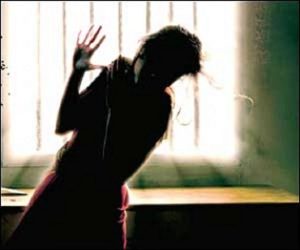By: Andaleeb Rizvi
Patriarchy, social stigma attached with being a female and lack of reproductive rights combined with an excessively volatile religious society are some of the major hurdles in dealing with child abandonment, also a contributing factor in gender imbalance in Pakistan. A country governed by a quasi-democracy and clergy has no compulsion stoning even newborns to death, let alone their mothers. Under such circumstances, it is no wonder that the number of abandoned babies found dead is far higher compared to those left alive in baby hatchets installed outside many Edhi centres across the country.
The natural human sex ratio is commonly thought to be 105 males to 100 females at birth; however due to systemic violence against the female sex, the global ratio is 101 boys per 100 girls. India, China and Pakistan are considered the leading sources of this ‘glitch’ in the statistics.
China is the worst with 118 boys born for every 100 girls, while India and Pakistan stand second at 111 boys for 100 girls due to population density.
To root out this problem, one first has to admit it exists. Our neighbour India has been trying to solve the issue of infanticide, especially female infanticide and sex-selective abortion, in Pakistan the issue is still taboo.
People discuss the matter in whispers, and mostly prefer shoving it under the carpet or wrapping up the ‘issue’ in rags and leaving it somewhere in the dead of the night. As a result, a glaring number of women are missing in the overall population, leading to gender imbalance in Pakistan.
As per Edhi officials, around 99 percent of the dead babies found from different parts of the country are female. Even a cursory glance through the data provided by Edhi Foundation is enough to reveal that we are in as dire straits as India and China when it comes to gender imbalance. Perhaps a census will further reveal the disparity putting a lot of speculation and ‘accusations’ to rest.
However, for now the data available to us is not too happy and even a cause for national shame. As per the statistics obtained from Edhi Foundation, in 2013, a total 729 babies were abandoned, with only 138 found alive, which means a 1:4 survival ratio. The highest numbers of dead babies were found from Punjab (255) and Karachi (201); number of live babies was 89 and 30 respectively. In 2012, the foundation collected 781 dead babies and only 192 live ones, while in 2011, 660 dead babies were found from all over Pakistan and only 133 live ones rescued. Similarly, in 2010, 861 babies were abandoned, of which 708 were found dead. Throughout the past five years, the average recorded survival ratio of abandoned babies has been only 1 out of 4.
Abandoned babies are just the tip of the iceberg; the list of methods aiding society in reducing the number of women is quite long. Female foeticide, honour killings, domestic violence and child marriage are other factors that affect the ratio of surviving women compared to men. Most people might attribute the matter to poverty and lack of literacy, but the startling number of sex-selective abortions undertaken at upscale hospitals in urban centres point to many darker secrets of misogyny, that are often beyond class.
Even a 2002 report made by Population Council, National Committee for Maternal and Neonatal Health (NCMNH), Guttmacher Institute and Research and Advocacy Fund that reveals 900,000 abortions were conducted in different hospitals fails to mention how many were to get rid of the female foetuses.
While staff at private hospitals admits to conducting abortions, especially of female foeticide, due to religious constraints and the fact that abortions are illegal in Pakistan, most of the procedures go unreported.
Since the idea of shame is attached with women, it is considered a huge responsibility to raise a daughter compared to a son, who is expected to grow up and become the protector as well as the breadwinner and in charge of taking the family name forward. It is the same concept that also forces parents to marry off girls at a very young age, many of whom are not ready to take up the responsibilities of child bearing and child rearing. This, combined with lack of reproductive rights and sex education, increases the issues manifold, and many women/girls end up throwing away babies or killing them with no option to even give them up for adoption.
In case of abandonment, developed countries have state-sponsored adoption programmes; however, in Pakistan, the State is not responsible for individuals and, hence, it has been left to private organisations to take care of the matter. According to an informal online group, Pakistan Adoption, there are only four organisations working to assist in adopting children in the country: Edhi Foundation, Anjuman Kashana-e-Itfal-o-Naunehal, SOS Children’s Village of Pakistan and HOPE, and an individual Didar Karim who lives in Canada. However, with no check and balance on reproductive rights and no prosecution in case of infanticides, the number of children available for adoption is far less compared to people who want to be parents.
Currently, Pakistan is in dire need of passing legislation that gives women and children a human status, ensuring for them ‘rights’.


